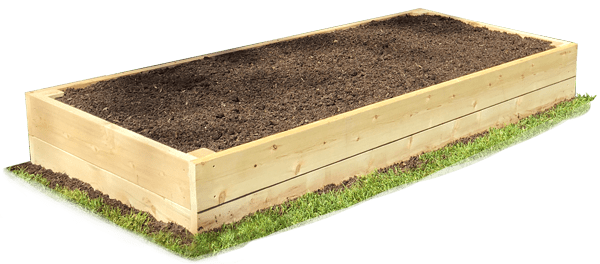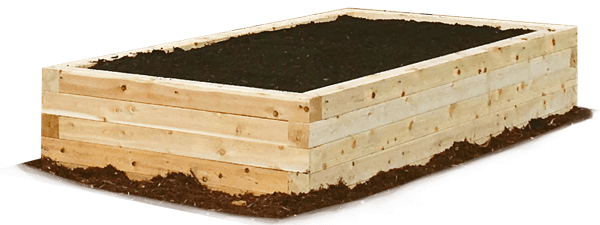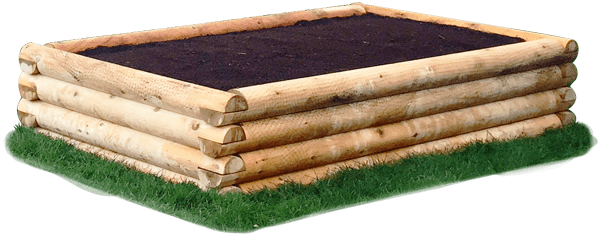Standard Raised Garden Beds
| Why Raised Beds | From beautifying and organizing your space, to reducing physical impact while gardening, to growing more food in less space, there is a long list of great reasons for choosing raised beds for your garden. |
| Eastern White Cedar | All BUFCO raised garden beds are hand crafted using Eastern White Cedar, a locally sourced, responsibly harvested and sustainable wood that offers excellent rot resistance. |
| Garden on any surface | Beds can be installed as open-bottomed boxes exposed to the soil below, or with a bed base for use on hard surfaces such as a patio or driveway. |
| Installed by our Expert Team | Installation services are managed by our experienced, knowledgeable, and friendly crew, and includes everything from soil to full clean up. |
Standard Raised Garden Beds
We offer two sizes of raised beds that are most commonly purchased – 4′ x 4′ and 4′ x 8′, the latter being the hands-down most popular size. Bed heights vary from one style of bed to another, and can be decided upon based on a few simple and specific considerations.
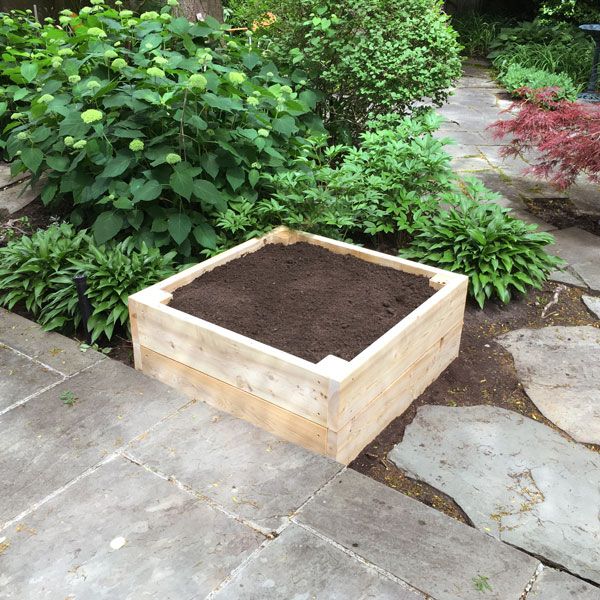

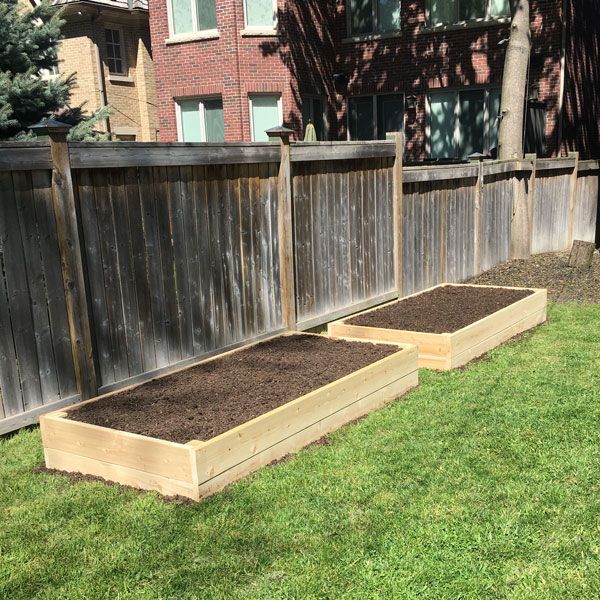
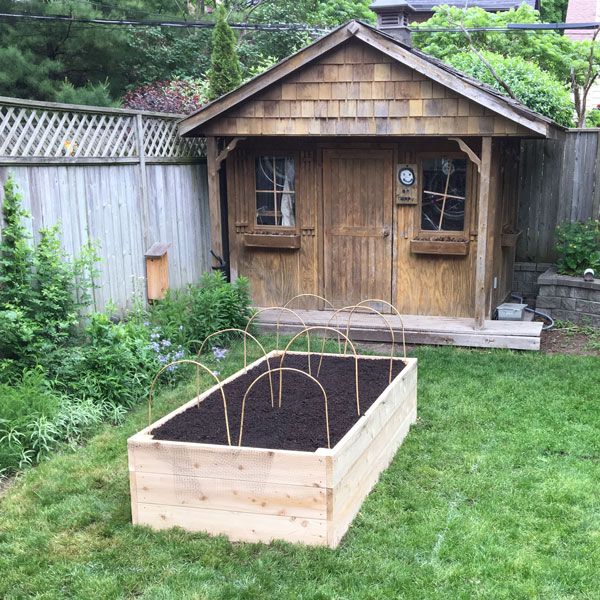
Deluxe Series
Installed Deluxe Raised Garden Beds include labour and soil and start at:
| Height | 4′ x 4′ Beds | 4′ x 8′ Beds |
| 16″ | $1,349 | $1,559 |
| 24″ | $1,499 | $1,759 |
Also available as DIY Kits starting at $499 DIY Kits include pre-drilled lumber, hardware and instructions.
Square Post Series
Installed Square Post Raised Garden Beds include labour and soil and start at:
| Height | 4′ x 4′ Beds | 4′ x 8′ Beds |
| 4 tiers (14″) | $1,399 | $1,699 |
| 5 tiers (17.5″) | $1,549 | $1,899 |
| 6 tiers (21″) | $1,699 | $2,099 |
| 7 tiers (24.5″) | $1,849 | $2,299 |
| 8 tiers (28″) | $1,999 | $2,499 |
Also available as DIY Kits starting at $599. DIY Kits include pre-drilled lumber, hardware and instructions.
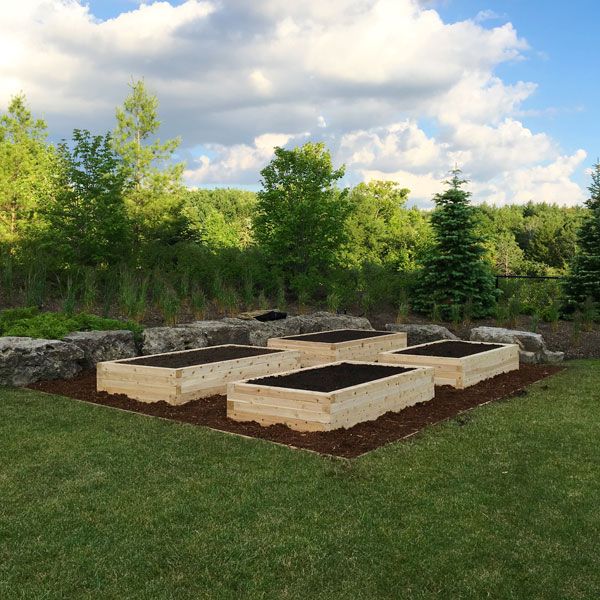
4’x8′ Square Post Series, 4-Tier on Cedar Mulch Pad

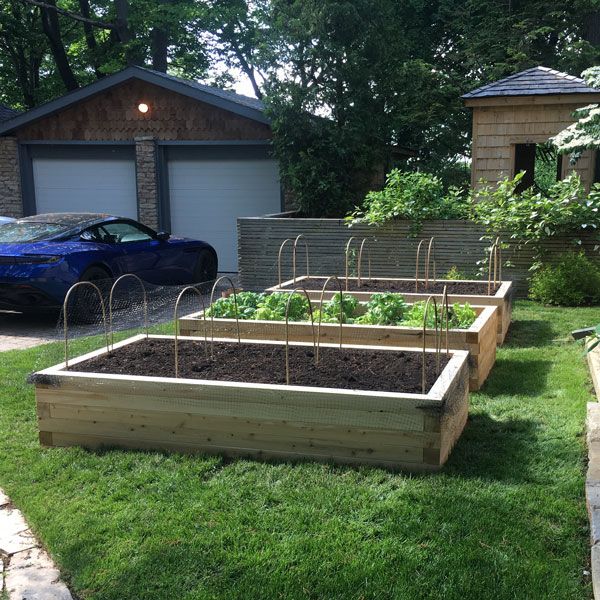
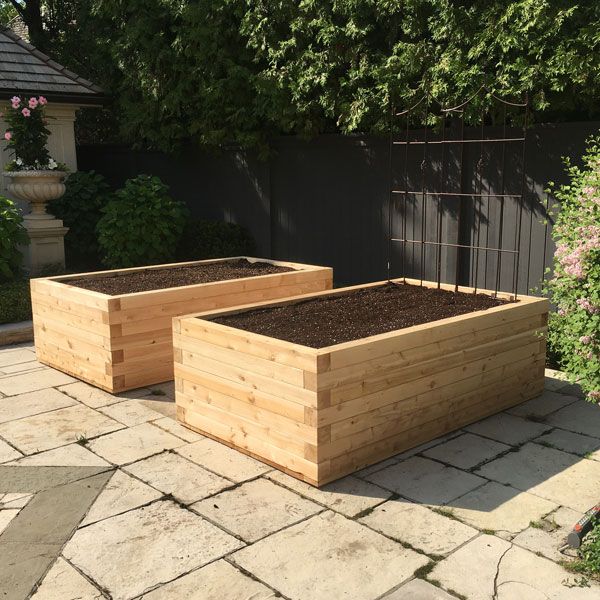
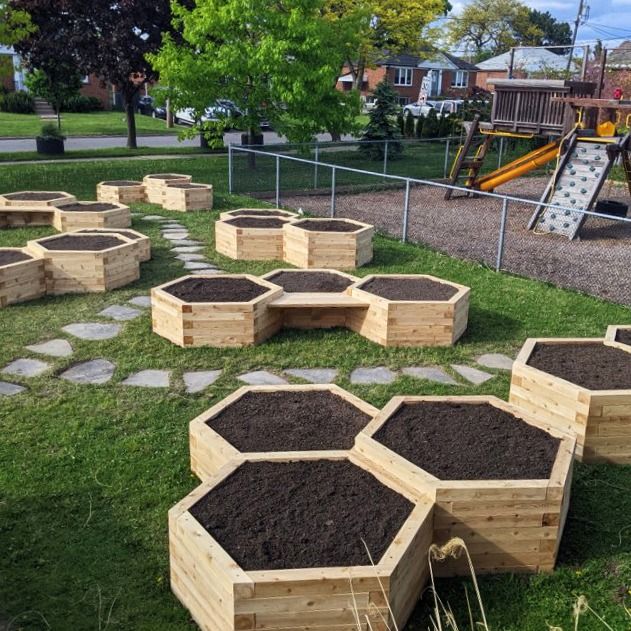
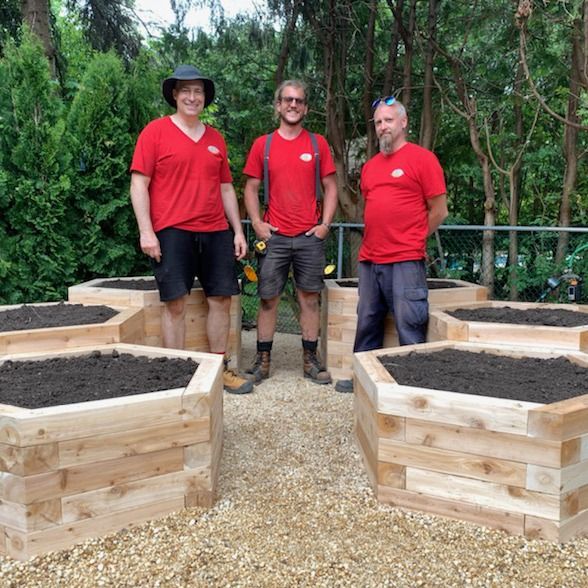

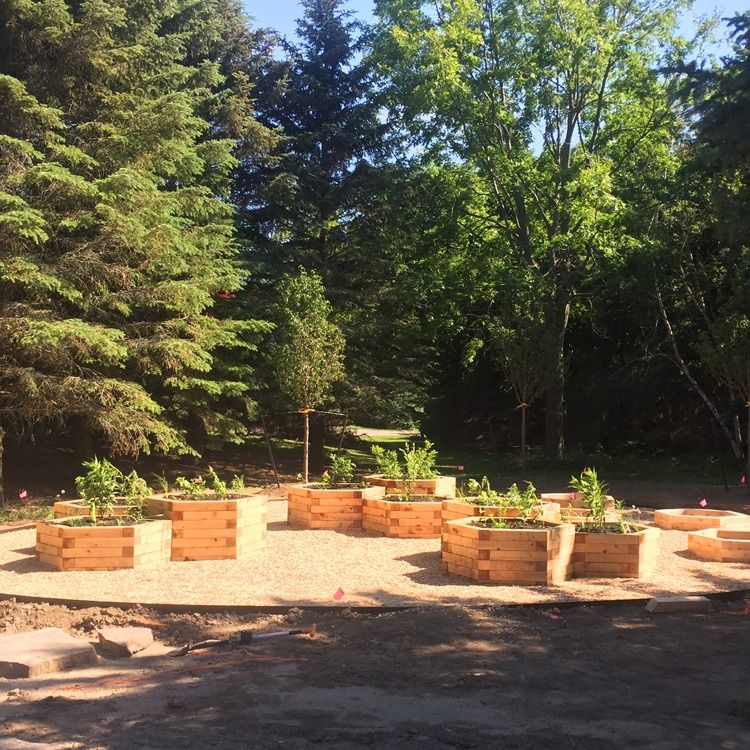
Hex Series
BUFCO’s hexagonally shaped beds, or Hex beds, are constructed with four-inch thick Eastern White Cedar fence post. They can be nestled together to create a honeycomb pattern, or can stand alone. Hex Beds are available in either a four-foot or five-foot diameter, in a variety of heights, and are expected to last at least ten years.
Hexagons are known to be the strongest of geometric shapes, and are found throughout nature (think honeycomb and snowflakes). They are also the most efficient geometric shape in that, when nestled together, they leave behind literally no wasted space. Various human societies throughout history have brought meaning to the shape, including some Indigenous cultures where each side represents one of the six directions – north, south, east, west, the upper regions (sky) and the lower regions (earth). The Jewish Star of David is believed to have similar directional representation, with each point looking to a specific direction. Look in the centre of the Star of David and you will see a hexagon.
Installed Hex Raised Garden Beds include labour and soil and start at:
| Height | 4′ Wide | 5′ Wide |
| 4 tiers (14″) | $1,459 | $1,699 |
| 5 tiers (17.5″) | $1,649 | $1,849 |
| 6 tiers (21″) | $1,799 | $1,999 |
| 7 tiers (24.5″) | $1,949 | $2,149 |
| 8 tiers (28″) | $2,099 | $2,299 |
Hex Series Raised Beds are not currently offered as DIY Kits.
Signature Series
Signature Series Raised Garden Beds are made with five-inch thick Eastern White Cedar logs, or dowels, and have a life expectancy of at least 12 years.
Currently unavailable
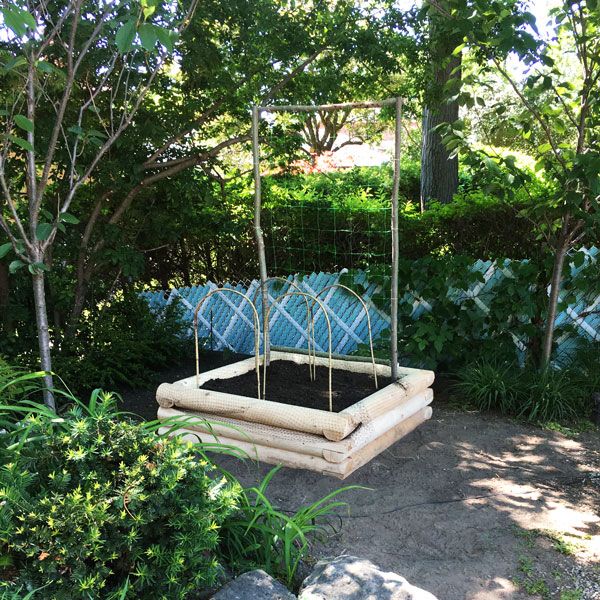
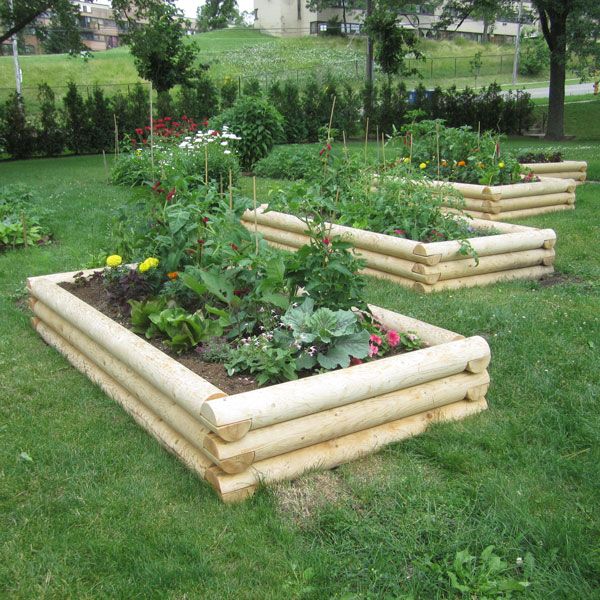
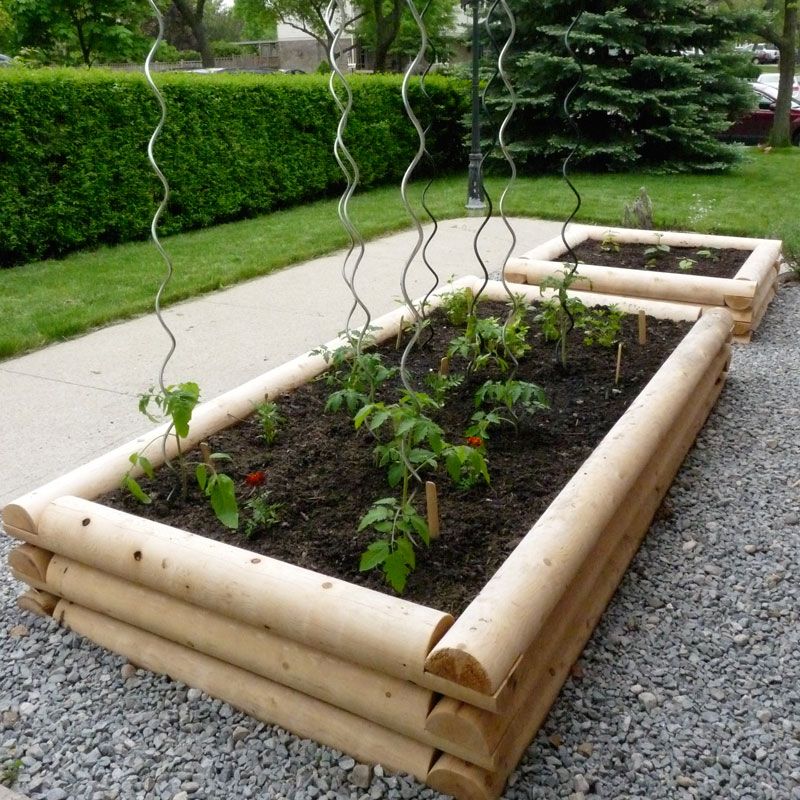
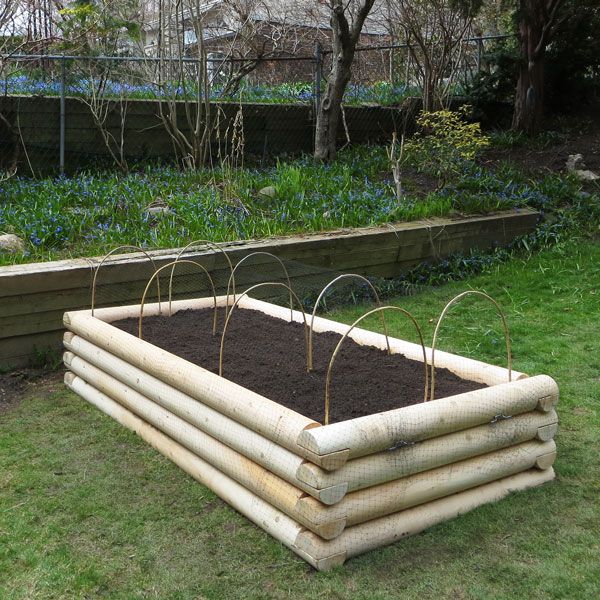
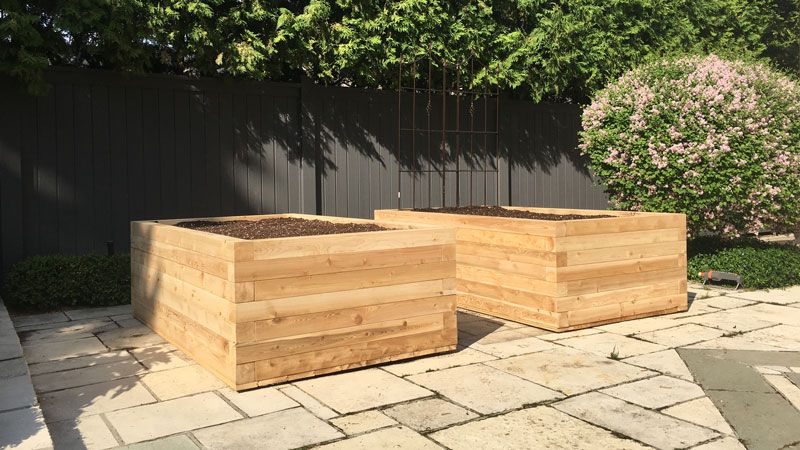
Beds with Bases
| 4′ x 4′ Bed Base | $329 |
| 4′ x 8′ Bed Base | $429 |
| 4′ Hex Bed Base | $329 |
| 5′ Hex Bed Base | $429 |
Frequently Asked Questions
All BUFCO Raised Garden Beds are made entirely from locally sourced, responsibly harvested Eastern White Cedar, making us Ontario Wood Certified. This beautiful and naturally rot-resistant wood lasts for years without the use of added chemicals or preservatives.
1. Raised Beds bring the garden up to the gardener! One of the most popular benefits of raised garden beds is their added height. This greatly reduces the amount of bending and kneeling required, helping to save your back and your clothes.
2. Raised beds provide excellent water drainage and aeration for superior root development. Open bottomed beds work with the existing soil in the ground, allowing worms and beneficial organisms to populate the bed, bring nutrients, break down dead organic matter and enrich the soil.
3. Raised beds are a great way to fight poor native soil conditions. In Toronto, many property owners are faced with either clay heavy or sandy soil, neither of which are optimal conditions for growing most vegetables. We bring in fresh, rich, weed-free triple mix soil that allows you to forget about the existing soil in your yard, and allows you to grow and eat with confidence, knowing your food is free of chemicals and pesticides.
4. Raised beds enable you to grow more in less space. Great soil promotes deep root growth which means you can grow plants more closely together.
5. Raised Beds give you an extra-early start to the growing season. Wood is a great insulator, leading to more stable soil temperatures, and allows you to warm up your soil when the ground around the beds is still frozen solid.
6. Raised beds provide a sturdy foundation. Unlike beds made from stone, metal, or plastic, cedar beds can accept screws and nails, making it easy to add a trellis (for climbing plants) and other accessories such as critter barriers and our season extending hoop tunnels that protect your plants from hungry squirrels and frosty temperatures.
BUFCO raised beds make a beautiful addition to any yard, terrace, patio, rooftop, or wherever you can imagine growing delicious organic vegetables. These beds are highly adaptable – add a base to retain soil, allowing you to grow on a deck, balcony, patio, rooftop, or driveway. We can even add wheels to make your garden portable!
There are basically two kinds of cedar in North America: Western Red Cedar, and Eastern White Cedar. Although these related woods share some properties such as rot resistance, there are a number of differences that we consider to be important. Here’s a blow-by-blow comparison of some of those features:
| Eastern White Cedar | Western Red Cedar |
| Grows throughout central and eastern Canada and north-eastern US states. | Grows throughout the North American west coast |
| Takes between 40 and 60 years to reach maturity – forests replenish more quickly | Takes up to 100 years to reach maturity |
| No clear-cutting practices, at least not by those who log our wood | Logging industry still using clear-cutting practices. Clear-cut forests lead to soil erosion, loss of wildlife habitat. Clear cut forests are extremely challenging to re-establish. |
| Travels a total of eight hours on trucks, from harvest to your door. | Travels up to one week from logging sites to mills to Toronto-based lumber yards |
| Harvested on an as-needed basis | Due to over-harvesting, younger trees are being logged, resulting in less stable lumber |
| Considered to be very rot resistant | Considered to be very rot resistant |
| Weathers to a silver-grey colour over the course of one to two seasons (depending on sun exposure) | Weathers to a silver-grey colour over the course of one to two seasons (depending on sun exposure) |
| Supports small local Ontario businesses, from harvest to transport to milling to BUFCO. | Supports large logging and trucking companies as well as some small businesses |
BUFCO beds may be a little more expensive than our competition but we sincerely believe that there is real value in working with small, local, unsubsidized companies that utilize responsible harvesting practices.
As a general rule, it is best to leave your raised bed open to the soil below. Open bottom beds usually have better drainage, but more importantly, the soil in the raised bed has the opportunity to interact with the existing soil below – the “native” soil. That means the worms, microorganism and other beneficial elements in the native soil can migrate into the raised bed soil, making the raised bed part of a larger ecosystem.
Bed bases are added to raised beds in specific circumstances, such as when the native soil below is suspected of being contaminated, if tree roots need to be kept from overtaking your raised bed from below, or if you are installing your raised bed on a solid, non-soil surface such as a rooftop, deck, or patio.
Bed height depends on a number of different factors. Consider the following:
How tall (or short) are the people using the garden? Tall people might want a taller bed to help reduce bending a bit more. Shorter people might want a shorter bed so tall plants are easier to reach.
What is the native (existing) soil like in your yard? A taller bed is a great benefit when installed on top of nutrient deficient or heavily compacted soil. If the native soil is healthy, with a nice loamy texture – rich and fluffy – you can get away with a shallower bed.
What plants are you growing? If you’re planning on years of tall tomatoes and trellised vertical growers such as pole beans, peas, and cucumbers, you’ll have to factor in the height of the plants and how you are going to access them at harvest time. We sometimes grow peas or pole beans in tall beds in the alley next to our garage – our neighbourhood demonstration garden. Inevitably, come harvest time, out comes the ladder, the only way we can reach that otherwise unreachable food.
One of the most important considerations is the grade, or slope, of the raised bed installation site. All yards are graded – or should be – down and away from the house so rainwater flows away from the foundation, minimizing the chances of water damage. Usually, yards with a consistent, gentle grade don’t really require an extra tall raised bed. However, steeper grades will. If your yard has a grade to it, have a look at this blog post on how to measure your grade.
Full Installation includes the crafting of the garden bed, bed assembly, removal of the sod underneath the footprint of the bed where required, levelling of the bed on the installation site and, in the case of multiple beds, leveling to one another where possible, lining the bed with landscape cloth to let excess water out while keeping the soil in, the filling of your bed with triple mix soil, and full clean up. In other words, when your installation is completed, you are ready to plant!
Upon arrival, our installation team headed by our Lead Hand, will consult with you regarding bed placement, working to optimize a variety of considerations including ease of access, best growing conditions, and of course, the ever important aesthetics.
Inputs such as seedlings and seed, soil amendments and plant foods, critter barriers, and trellises, are not included.
BUFCO DIY Kits include easy-to-assemble kits that have pre-drilled holes and include hardware as well as assembly and installation instructions. Just add soil and grow!
The majority of our installations are raised beds that are open to the native soil below. In these cases, we use a beautifully textured, weed and seed-free triple mix soil, comprised of one third peat, one third well composted horse manure, and one third top soil from fallow farm fields. Although not certified organic, it is clean and free from pesticides and herbicides.
In beds with bases, which are basically containers, the triple mix will compress and compact over time, making it difficult for the young, delicate roots of seedlings and newly germinated seed to penetrate. In these cases, we use a certified organic growing medium called Rooftop Mix. This soil has a higher content of peat as well as roughly one-third worm castings (worm poop – probably the single most nutritious element that can be both found naturally in soil or added to a soil blend). Both these elements help reduce soil compaction and are excellent holders of water.
We do not recommend treating or otherwise preserving our raised beds. For starters, our Eastern White Cedar is already naturally rot resistant. Additionally, unless the preservative is food safe, there is a risk of contaminating the soil. If a preservative is to be used, it must be food grade. Another consideration is that of nut allergies. A number of oil preservatives use nuts as a source of that oil, which can trigger an allergic reaction.
We also tend to really appreciate the lovely soft grey colouring of aged cedar.
Main considerations regarding the bed styles include:
- Your budget: the different styles have different price points.
- Your aesthetic preference: Each style presents a different look.
- Longevity: the different styles offer different wood thicknesses. Our Deluxe Series are expected to last roughly eight years; Square Post Series Hex Series will last at least 10 years; and our Signature Series will last at least 12 years.
We do our absolute best to maintain prices as quoted, however there are rare circumstances that can effect the quoted price. These circumstances can include issues such as:
- Unexpectedly long travel distance from our staging area (where our trucks can park and soil can be dumped) to the installation area
- Unexpected obstructions such as stairs that we were unaware of
- Unexpected buried elements such as in-ground irrigation systems
- Unexpected existing foliage that needs removing from the installation area
- For installations that require excavation such as the establishment of a pea gravel or mulch pad, or for the installation of an Herb Spiral, unexpected obstructions such as large tree roots or buried large rocks.
We endeavour to keep our clients well apprised of any conditions that are slowing our progress.
